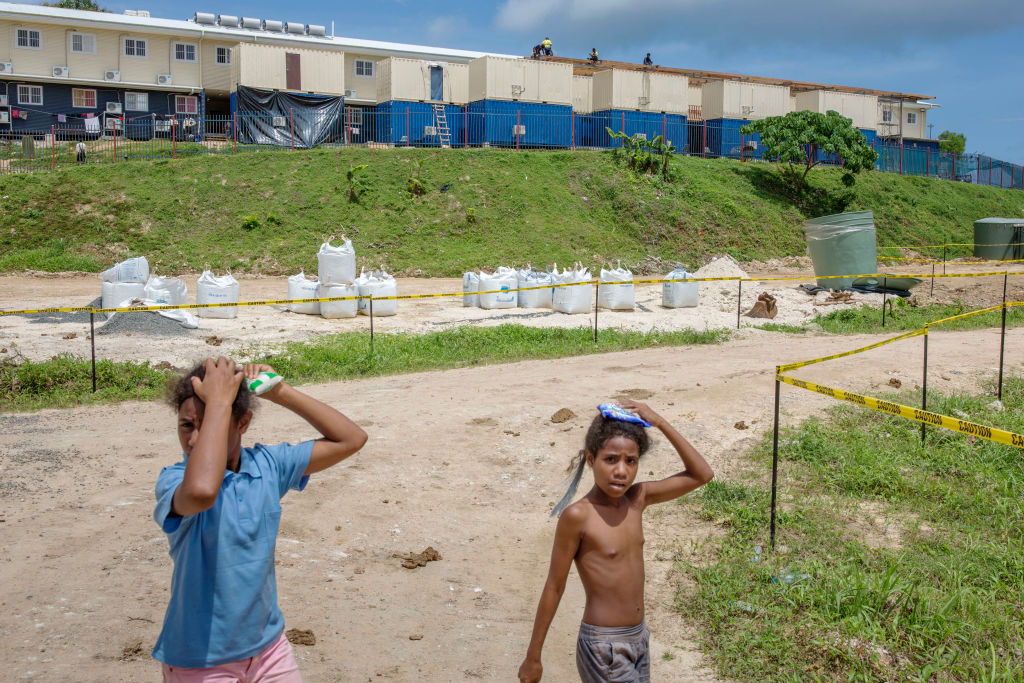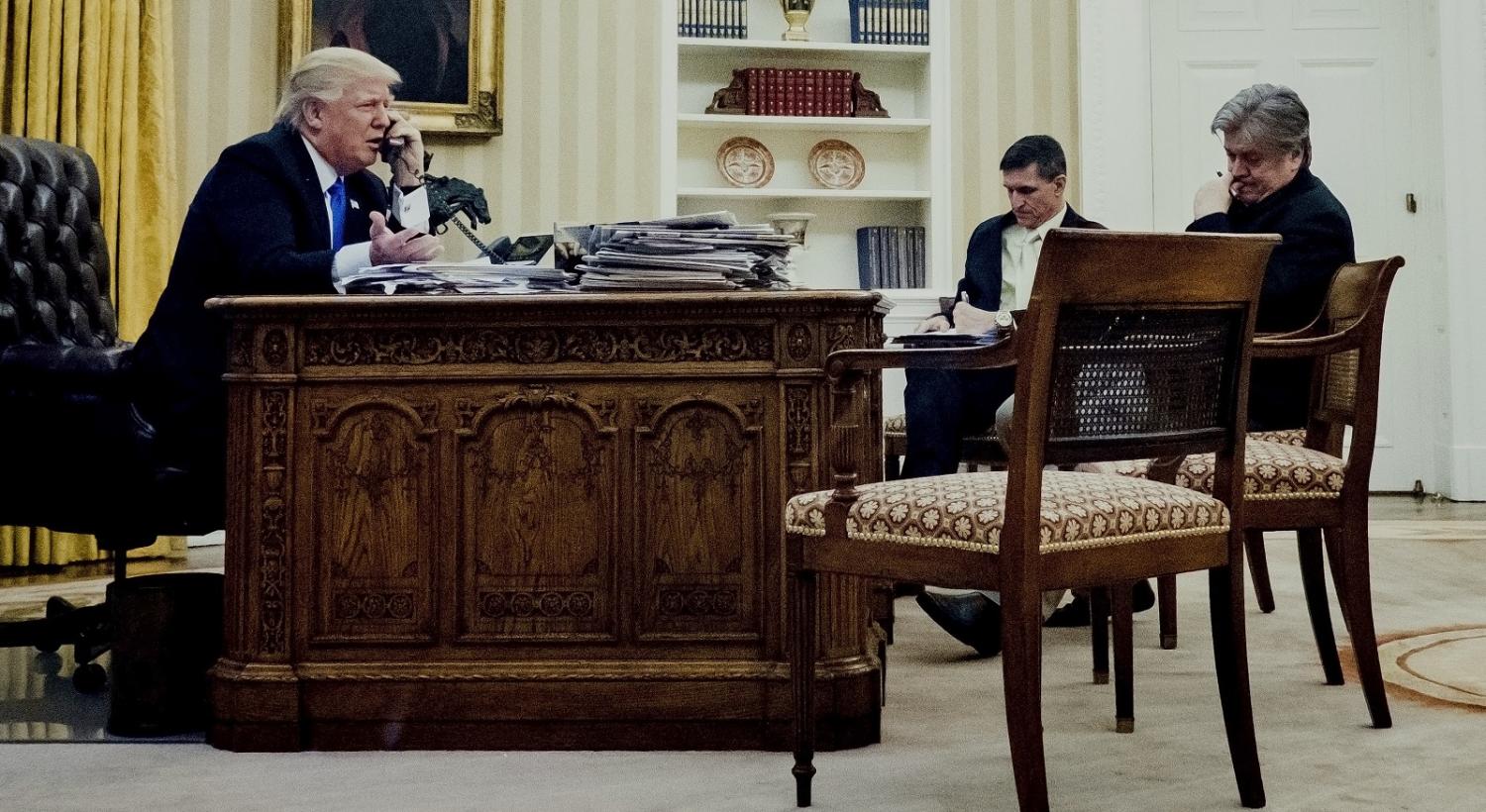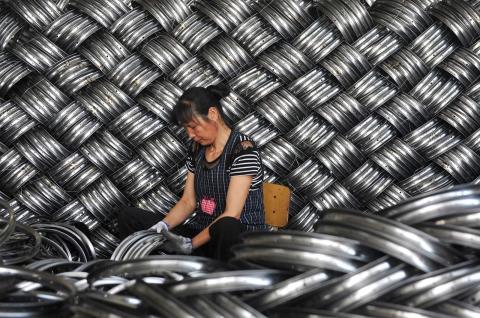When US President Donald Trump and former Australian prime minister Malcolm Turnbull held their infamous, protocol-smashing phone call in the president’s first week in office in January 2017, largely lost in the international headlines about the exchange was the actual topic of conversation. Now, as a result of a recent story broken by Politico about two accused murderers being resettled in Australia, more light has been shed on the secretive background to the call.
The Politico story has raised many new questions, even as others find partial answers. Yet more importantly, it also has the potential to cast a pall over current efforts to resettle hundreds of non-violent migrants and to jeopardise plans to welcome more.

It had been well known Trump and Turnbull came to loggerheads about the United States upholding its side in a people “swap” agreement brokered with the Obama administration. The deal had involved the US reviewing the cases of 1250 migrants held in the detention facilities on Nauru and Manus Island in Papua New Guinea, and settling those which meet selection criteria. It was originally speculated that Australia’s end of the bargain consisted of resettling Central American asylum-seekers being processed in Costa Rica. However, it was puzzling that in a transcript of the call leaked several months later, Turnbull had spoken of Australia “taking people from the previous administration that they were very keen on getting out of the United States” but no mention was made of Costa Rica or Central Americans.
This was until the Politico report, which pointed to more sensitive dimensions to the deal. The story asserted that Australia had accepted from the United States two Rwandan guerrillas accused of gruesomely murdering eight Western tourists in 1999. After the men were extradited to the United States, the prosecution against them broke down owing to a ruling that their confessions were obtained through torture while in Rwandan custody, and they were held in legal limbo for years. The story of the transfer understandably caused dismay for the victims’ families and alarm in Australia, where it proved a point of controversy just days before last month’s election.
However, the scandal resulting from the new revelations should not cloud the issue of refugee and migrant resettlement. On the contrary, the renewed attention on the deal should be taken as an opportunity to redirect focus on its original, humanitarian promise.
The scandal resulting from the new revelations should not cloud the issue of refugee and migrant resettlement.
In fact, despite the quid pro quo nature of the secret provisions, at least some of the motivations behind the pledges by both governments seem to have been genuinely altruistic. Notwithstanding some earlier mixed messages, it now appears that Canberra’s commitment to take in more refugees from outside the Asia-Pacific region was indeed untied to a specific promise made to the United States and, as the Australian side had maintained, simply offered in goodwill at an Obama-hosted global migration summit. And for the United States’ part, an official that helped negotiate the deal later stated: “The impetus behind the US-Australia deal on our side was to get the people who were refugees off those islands, because my understanding was that conditions were bad.”
To date, even with the politically fraught nature of the question of migrants in the United States, over 500 refugees previously held in Nauru and Papua New Guinea have been resettled without much attention. This suggests that US agencies could continue to offer asylum to potentially hundreds more without sparking a backlash with either the public or the hardline anti-immigration factions within the administration.
Australia, for its part, seems similarly well positioned to welcome a sizable number of refugees from Central America. In fact, the United States believed Australia would do more on this front: after Canberra granted asylum in late 2017 to 30 people that had fled gang violence in El Salvador, there have been no additional reports of Central Americans being resettled in Australia.
In contrast to the United States, where this population has been maligned in certain influential sectors, there exists little fear mongering about Central Americans in Australia and therefore fewer political obstacles to the government accepting more. If anything, the newfound Australian fascination with Latin America and its culture – despite the tiny number of Latin Americans in the country – speaks to the degree to which they might find a welcoming home in Australia.
Moreover, beyond the political calculus of accepting more migrants and refugees, it is important to step back from the facile vision of such people as bundles of needs to be dealt with. Study after study has demonstrated the salutary economic effects that new arrivals have on their adopted countries, which is to say nothing of the social and cultural enrichment they bring.
Australia and the United States would do well to bear this in mind as they move forward, and go beyond the current minimalistic follow-through on their pledges. With the reelected Coalition government likely to maintain the detention and offshore processing policies for the foreseeable future, the United States should make good on taking in the remaining migrants it agreed to resettle, and welcome even more should they meet selection criteria. And with the United States’ uncompromising stance toward the Central American migrant crisis showing no signs of waning, Australia should do far more than resettle just 30 people from the region.
By more fully embracing their humanitarian commitments, Australia and the United States would be living up to promises to a key ally to help resolve thorny policy issues. In the process, they would strengthen the increasingly necessary bonds of collaboration on the ever more pressing challenge of global migration.

